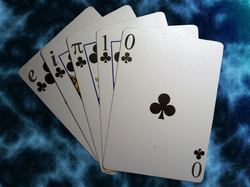If one proceeds to cut each of the two slices in half, there will be four slices in all. Each slice is one-fourth of the pie or ¼. One can also say that each of the four slices is a quarter of the pie since there are four equal-sized slices [1].
It is possible to continue cutting each of the slices in half. When one cuts the quarter-size slices in half, there will be eight slices in all, and they will have the same size as long as the quarter-size ones were exactly cut in half [1]. At this point, each slice will be one-eighth of the entire pie or ¹/₈.
If someone eats two of the slices which are each ⅛ of the pie, he or she will have consumed ²/₈ or ¼ of it. This is because ²/₈ is the same as ¼ since the numerator “2” is a fourth of “8.” In other words, one can multiply (2)(4) and get 8 as the product. The notation (2)(4) is the same as “two times four.” Hence, (2)(4)=8.
Another way to show that ²/₈ is the same as ¼ is to multiply the numerator and denominator by ½. This is the same as multiplying the entire fraction by “1.” Therefore, ½ of “2” equals “1”, and one-half of “8” is “4.” This leaves a fraction of ¼.
It is also possible to divide objects of many shapes. For example, one can slice a rectangular candy bar into five equal parts. If someone eats two of those equal parts, he or she will have consumed two of the five parts, or ⅖ of the entire candy bar [1].
A person has to be careful whenever he or she cuts something into parts. Some shapes will not leave equal slices because the cuts are not as simple as they are for a circle, square, or rectangle. If the parts are not equal, one can still say there are, for example, 1, 3, or 4 parts, but the student may not know what fraction to assign to each part as they may have different relationships to each other [1].




 The Reality of Aspirinon 05/24/2021
The Reality of Aspirinon 05/24/2021
 An Old Microbeon 03/31/2021
An Old Microbeon 03/31/2021
 Coronavirus and Mental Illnesson 02/14/2021
Coronavirus and Mental Illnesson 02/14/2021
 Acute Ischemic Strokeon 12/25/2020
Acute Ischemic Strokeon 12/25/2020



Comments